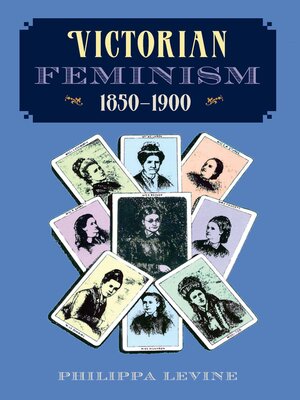
Sign up to save your library
With an OverDrive account, you can save your favorite libraries for at-a-glance information about availability. Find out more about OverDrive accounts.
Find this title in Libby, the library reading app by OverDrive.



Search for a digital library with this title
Title found at these libraries:
| Library Name | Distance |
|---|---|
| Loading... |
The second half of the nineteenth century saw in newly industrialized England the creation of a "domestic ideology" that drew a sharp line between domestic woman and public man. Though never the dominant reality, this demarcation of men's and women's spheres ordered people's values and justified the existing social structure. Out of this context sprang a women's movement that celebrated its female identity, its campaigns "concerned as much with promoting that optimistic self-image as with a simple call for equality with men." Levine traces the changing face of a half century of England's feminist movement, the personalities who dominated it, its pressing issues, and the tactics employed in the fight. Political themes common to the specific protests, she finds, included women's moral superiority, a close-knit sense of a supportive female community, and a conscious woman-centeredness of interests. Along the way, Levine puts to rest many inaccuracies and assumptions that have dogged the history of presuffragette feminism, causing it to be discredited or dismissed. She refutes, for example, the judgement that the movement served only the needs of bourgeois women, and she warns against the pitfall of defining feminism by the standards of a male politics whose practices make comparisons inadequate and unsuitable. Levine has organized her study with an eye to the breadth of concerns that characterized England's nineteenth-century feminism: women's entry into education and the professions; trade unionism, working conditions, equal pay; suffrage and other political and property rights for women; marriage and morality issues—prostitution, incest, venereal disease, wife abuse, pornography, and equal rights to divorce.







